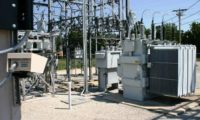The project presented various challenges that most companies were not immediately able to overcome without significant customization of COTS equipment and serious investment in specialized installation methods. The remoteness of some of the locations and the absence of telephone or cellular communications made it difficult to transfer the alarm signals to the central monitoring station. But the strong electromagnetic interference emitted by the 35kV lines presented a significantly bigger problem for a standard microwave barrier solution.
STR Inc. worked with its partner and the end user, studying the details of each site using CAD drawings, topographic maps and satellite pictures. The end-user’s engineering team and communication/IT department offered support to help solve the alarm signal transmission issue. The signal from the detectors was modulated into their SCADA network and linked to the alarm panels at the operations command center located, in some instances, several hundred kilometers from the protected locations.
To overcome the EMI from the high-voltage lines, STR Inc. proposed the use of its IMB-150RD detectors that are specifically designed to be immune to this kind of interference. The IMB-150RD can be installed 30 meters from power transmitting lines without detriment to their detection specifications. It was also recommended that the lines powering the detectors and carrying the alarm signals were installed trying to avoid any parallelism with the high-voltage power lines as to avoid the induction of voltage spikes that could cause false positive detections.
In total, 16 Power Substations were protected. The average detection zone length was 50 meters and the detectors were installed two meters from the inside of the fence surrounding the structures.

